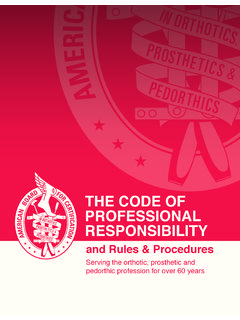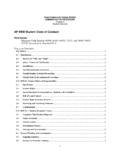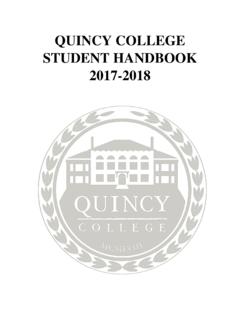Transcription of code of practice GRIEVANCE PROCEDURES
1 1 Section 1: disciplinary rules and proceduresCODE OF practice ONDISCIPLINARY AND GRIEVANCE PROCEDURES code of practiceLRA disciplinary Booklet:Layout 1 25/03/2011 17:47 Page 1 Should you require this code of practice in an alternative format or language, please contact the disciplinary Booklet:Layout 1 25/03/2011 17:47 Page 21 Section 1: disciplinary rules and proceduresDisciplinary and GRIEVANCE ProceduresForewordThis code of practice provides practical guidance to employers, workers1andtheir representatives on: the statutory requirements relating to disciplinary and dismissal issues; good employment practice in dealing with GRIEVANCE issues; what constitutes reasonable behaviour when dealing with disciplinary and GRIEVANCE issues; drawing up and using disciplinary and GRIEVANCE PROCEDURES ; and a worker s statutory right to bring a companion to GRIEVANCE and disciplinary and employees should always seek to resolve disciplinary andgrievance issues in the workplace.
2 Where this is not possible employers andemployees should consider using an independent third party to help resolvethe problem. The third party need not come from outside the organisation butcould be an internal mediator, so long as they are not involved in the disciplinary or GRIEVANCE issue. In some cases an external mediator might be LawEmployers must be careful not to discriminate on any of the proscribed discrimination grounds in dealing with disciplinary and GRIEVANCE with the core principles of this code fairness, consistency andtransparency - will significantly assist compliance with anti- discrimination should pay attention to the provisions of the Disability Discrimination Act 1995 and, in particular, to the statutory provisions regarding making reasonable adjustments under the Act when dealing with disciplinary and GRIEVANCE are individuals who have entered into or who work under a contract of employment which is a contract ofservice or apprenticeship.
3 The term worker includes employees but additionally includes individuals who have enteredinto or who work under any other contract whereby the individual undertakes to do or perform personally any work orservices for another party to the contract whose status is not by virtue of the contract that of a client or a customer of anyprofession or business undertaking carried on by the individual. Determination of whether or not a particular individual isan employee can be complex and is ultimately a matter for courts and tribunals to decide. Please see also the secondparagraph on page disciplinary Booklet:Layout 1 25/03/2011 17:47 Page 32 Employers should also monitor the operation of their disciplinary and GRIEVANCE PROCEDURES as part of their wider equal opportunities DevelopmentsReaders of this code should be aware of the evolving legislative and caselaw framework surrounding dismissal, disciplinary and GRIEVANCE issues.
4 Developments such as the application of Article 6 of the Human Rights Act asset out in Schedule 1 of the Human Rights Act 1998 [right to a fair trial] raisesuch issues as the right to examine witnesses, the use of anonymous informants and the right to legal representation. Readers should be aware ofsuch issues arising and manage them of disciplinary and GRIEVANCE proceduresTo accommodate the handling of disciplinary and GRIEVANCE issues in theworkplace employers should pay particular attention to those employees whohave difficulty reading or whose first language is not English. To ensure thatthe disciplinary and GRIEVANCE PROCEDURES are understood and operate effectively the use of translators or interpreters might be Chapter 16 - A Unified Guide to Promoting Equal Opportunities in Employment published by the Equality Commission for Northern IrelandLRA disciplinary Booklet:Layout 1 25/03/2011 17:47 Page 43 Status of CodeThis code of practice provides for the repeal of the existing statutoryworkplace GRIEVANCE PROCEDURES under the Employment (Northern Ireland)Order 2003.
5 The requirements of this code in relation to workplacegrievances are similar to the previous statutory obligations, whilst thestatutory requirements regarding dismissal and discipline remain unchangedby this statutory dismissal and disciplinary PROCEDURES , as set out in the Employment (Northern Ireland) Order 2003 Schedule 1, Part 1, apply only toemployees and this term is used throughout Sections 1 and 2 of this , it is good practice to allow all workers access to disciplinary andgrievance PROCEDURES . The statutory right to be accompanied at certain typesof disciplinary and GRIEVANCE hearings as set out in Article 12 of the Employment Relations (Northern Ireland) Order 1999 ( 1999/2790 ( )), as amended by Article 18 of the Employment Relations (Northern Ireland)Order 2004 ( 2004/3078 ( 19)), applies to all workers (which includesemployees) and this term is used in Section 3 of this code except where reference is made to the right of accompaniment under the statutory discipline and dismissal failure to follow any part of this code does not, in itself, make a person ororganisation liable to proceedings.
6 However, industrial tribunals shall take thisCode into account when considering relevant cases. Similarly, arbitrators appointed by the LRA to determine relevant cases under the LRA ArbitrationScheme shall take this code into and employees should be aware that failure to follow any aspectof the statutorydismissal and disciplinary procedure will result in any industrial tribunal award being adjusted to reflect this failure. With reference to grievances, an industrial tribunal can take into account anyunreasonablefailure to follow the GRIEVANCE aspects of this code and may financially penalise the employer or the employee. LRA disciplinary :Layout 1 29/03/2011 11:58 Page 54 This code is issued under Articles 90(7) and (17) and 107(3) of the IndustrialRelations (Northern Ireland) Order 1992 ( 1992/807 ( 5)) and comesinto effect by order of the Department for Employment and Learning on 3rdApril 2011.
7 It replaces an earlier code on disciplinary and GRIEVANCE PROCEDURES issued by the LRA in April disciplinary Booklet:Layout 1 25/03/2011 17:47 Page 65 ContentsPageSection 1: disciplinary rules and PROCEDURES 7At a glance 8 Guidance 9 Why have disciplinary rules and PROCEDURES ? 9 Dealing with disciplinary issues in the workplace 11 What if a GRIEVANCE is raised during a disciplinary case? 19 Dealing with gross misconduct 20 Dealing with absence from work 20 Dealing with particular situations 21 Appeals 22 Keeping records 23 Drawing up disciplinary rules and PROCEDURES 24 Further action 27 Section 2.
8 GRIEVANCE PROCEDURES 28At a glance 29 Guidance 29 Why have GRIEVANCE PROCEDURES ? 29 Dealing with grievances in the workplace 30 Letting the employer know the nature of the GRIEVANCE 31 Holding a meeting with the employee to discuss the GRIEVANCE 31 Deciding on appropriate action 32 Appeals 32 Overlapping GRIEVANCE and disciplinary issues 32 Collective grievances 32 Keeping records
9 33 Drawing up GRIEVANCE PROCEDURES 33 Section 3 35At a glance 36 Guidance 37 What is the right to be accompanied? 37 What is a disciplinary hearing? 37 What is a GRIEVANCE hearing? 37 What is a reasonable request? 38 The companion 38 Applying the right 39 LRA disciplinary Booklet:Layout 1 25/03/2011 17:48 Page 76 Section 4 41 Annex A: Standard statutory dismissal and disciplinary procedure 42 Annex B: Modified statutory dismissal and disciplinary procedure 44 Annex C: Statutory dismissal and disciplinary procedure: general requirements 45 Annex D.
10 Statutory dismissal and disciplinary procedure: exemptions and deemed compliance 46 LRA disciplinary Booklet:Layout 1 25/03/2011 17:48 Page 87 Section 1 disciplinary rules and proceduresLRA disciplinary Booklet:Layout 1 25/03/2011 17:48 Page 98 Section 1: disciplinary rules and proceduresAt a glanceThis summary applies to conduct and capability disciplinary rules and PROCEDURES Involve management, employees and their representatives where appropriate (paragraph 56). Make rules clear and brief and explain their purpose (paragraph 57). Explain rules and PROCEDURES to employees and make sure they have a copy or ready access to a copy of them (paragraph 59). Make provision for informal resolution of matters of discipline where appropriate (paragraph 13).







